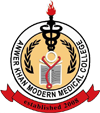Anwer Khan Modern Medical College
Library Management System
| Title: | Clinical anatomy by regions |
| Author Name: | Richard S. Snell |
| Author Sur Name: | SNELL, Richard S. |
| Edition/Published: | 9th ed. _New Delhi : LWW , 2013 |
| New to this edition: |
|
|
Physical Description: x, 754, : <p>ill., tables</p>.; 27.5cm. |
| Notes | Includes Index. |
| Includes Index: | P. 723-754 |
| ISBN No's: | 978-81-8473-658-8 , , |
| Bar Code's: | , , |
| Shelf Location's: | 89 , , |
| Classification | |
| Subject: | Anatomy, Regional |
| Dewey Class No: | 612 |
| Letter Call No: | S2c |
| LC Classification: | QM23.2 .S55 2012 |
| Other's Book Information | |
| Book ID No: | 1405 , 1406 , 1407 |
| Total Books: | 3 |
| Date of collection's: | 29-Dec-2013 , 29-Dec-2013 , 29-Dec-2013 |
| Donation / Purchase: | Purchase |
| Language: | English |
| Status: | Available |
| Department: | Anatomy |
| Synopsis: |
|
| Review: |
|
| Summary: |
This book provides medical students, dental students, allied health students, and nursing students with a basic knowl-edge of anatomy that is clinically relevant. |
| Preface: |
This book provides medical students, dental students, allied health students, and nursing students with a basic knowledge of anatomy that is clinically relevant. In this new edition, further efforts have been made to weed out unnecessary material and reduce the size of the text. The following changes have been introduced. 1. The text and tables have been reviewed and trimmed where necessary. 2. All the illustrations have been reviewed and some have been discarded where duplication occurs. 3. The anatomy of common medical procedures has been carefully reviewed. Sections on the complications caused by the ignorance of normal anatomy have been retained. 4. The Clinical Problems and Review Questions are available online at www.thePoint.lww.com/Snell9e Each chapter of Clinical Anatomy is constructed in a similar manner. This gives students ready access to material and facilitates moving from one part of the book to another. Each chapter is divided into the following categories: 1. Clinical Example: A short case report that dramatizes the relevance of anatomy in medicine introduces each chapter. 2. Chapter Objectives: This section focuses the student on the material that is most important to learn and understand in each chapter. It emphasizes the basic structures in the area being studied so that, once mastered, the student is easily able to build up his or her knowledge base. This section also points out structures on which examiners have repeatedly asked questions. 3. Basic Clinical Anatomy: This section provides basic information on gross anatomic structures that are of clinical importance. Numerous examples of normal radiographs, CT scans, MRI studies, and sonograms are also provided. Labeled photographs of cross-sectional anatomy of the head, neck, and trunk are included to stimulate students to think in terms of three-dimensional anatomy, which is so important in the interpretation of imaging studies. 4. Surface Anatomy: This section provides surface landmarks of important anatomic structures, many of which are located some distance beneath the skin. This section is important because most practicing medical personnel seldom explore tissues to any depth beneath the skin. 5. Clinical Problem Solving and Review Questions: Available online at www.thePoint.lww.com, the purpose of these questions is threefold: to focus attention on areas of importance, to enable students to assess their areas of weakness, and to provide a form of self-evaluation for questions asked under examination conditions. Many of the questions are centered around a clinical problem that requires an anatomic answer. To assist in the quick understanding of anatomic facts, the book is heavily illustrated. Most figures have been kept simple, and color has been used extensively. Illustrations summarizing the nerve and blood supply of regions have been retained, as have overviews of the distribution of cranial nerves. R.S.S |
| Content: |
Preface v Acknowledgments vii CHAPTER 1 Introduction 1 CHAPTER 2 The Thorax: Part I—The Thoracic Wall 34 CHAPTER 3 The Thorax: Part II—The Thoracic Cavity 58 CHAPTER 4 The Abdomen: Part I—The Abdominal Wall 113 CHAPTER 5 The Abdomen: Part II—The Abdominal Cavity 156 CHAPTER 6 The Pelvis: Part I—The Pelvic Walls 240 CHAPTER 7 The Pelvis: Part II—The Pelvic Cavity 262 CHAPTER 8 The Perineum 302 CHAPTER 9 The Upper Limb 334 CHAPTER 10 The Lower Limb 435 CHAPTER 11 The Head and Neck 527 CHAPTER 12 The Back 682 Appendix 720 |
Related Books
- Langman's medical embryology.
- Atlas of human anatomy
- Atlas of human anatomy
- Clinical anatomy by regions
- Gray's anatomy: the anatomical basis of clinical practice
- Junqueira's basic histology: text and atlas
- Textbook of anatomy upper limb and thorax: vol. 1
- Textbook of anatomy head, neck and brain: vol. 3
- Textbook of human osteology: with atlas of muscle attachments
- Textbook of human osteology: with atlas of muscle attachments
